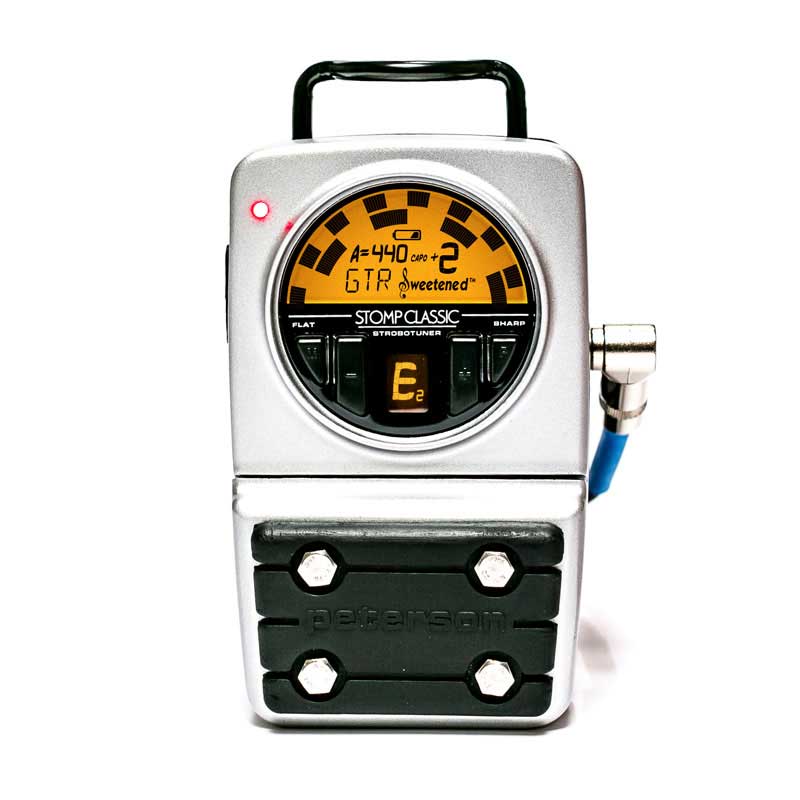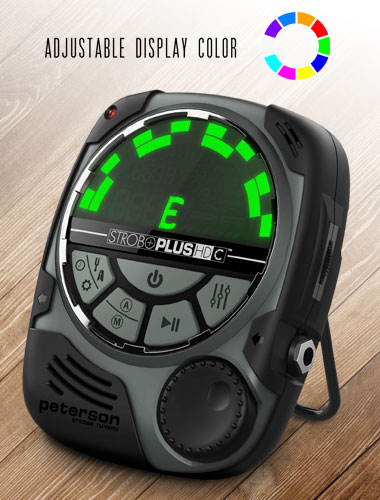Billy Gibbons
Rock
"I use these Peterson Tuners, they're for me"

Overview
Products
Instruments
Videos
Related Profiles
Billy Gibbons
Overview
Rio Grande Mud When the Moving Sidewalks folded in 1969, Gibbons sought to form a more straight-ahead, boogie/blues-rock-based band, and after hooking up with a pair of other fellow Texans, bassist Dusty Hill and drummer Frank Beard, ZZ Top were born. The power trio slowly but steadily built up a solid following, largely due to Gibbons’ tasty guitar playing and muscular riffs (especially evidenced on such renowned tracks as “La Grange” and “Tush”). Over the course of five classic albums over a six-year span (1970’s self-titled debut, 1972’s Rio Grande Mud, 1973’s Tres Hombres, 1975’s Fandango, and 1976’s Tejas), ZZ Top became one of the country’s top rock bands before taking a three-year break. When they returned, the musical climate had changed considerably, and ZZ Top opted to change with the times — as a more modern, electronic sound was merged with their blues-rock roots on such albums as 1979’s Deguello and 1981’s El Loco. But with the release of 1983’s Eliminator, the new approach came together for the group, while both Gibbons and Hill happened to come across a gimmick that will be forever associated with the group: long and stringy beards that grew down to their chests. It didn’t hurt that the group was responsible for some of MTV’s most popular video clips of all time (which always seemed to primarily focus on good-looking girls and a snazzy 1933 Ford three-door coupe, rather than the bandmembers), “Give Me All Your Loving,” “Sharp Dressed Man,” and “Legs.” Gibbons and Hill also became known for their assortment of matching and outlandish guitars, which were also always on display in their videos. La Futura But the trio’s newly acquired commercial direction caused some consternation among longtime fans, and by the mid-’90s, new ZZ Top albums failed to sell as well as their earlier titles had, although a large and loyal following still flocked to their shows. Following 2003’s Mescalero, ZZ Top parted ways with RCA and it took them nearly a decade to deliver a new album: the Rick Rubin-produced La Futura appeared on American in 2012. Gibbons quickly followed that album with his first-ever solo project, the Cuban-inflected Perfectamundo, where he was supported by a group called the BFG’s. Perfectamundo appeared in November 2015.
A longtime vintage guitar collector, Gibbons owns some of the world’s most cherished and rare guitars, including a particular instrument that he’s become synonymous with, a 1959 Sunburst Les Paul Standard (which he dubbed “Pearly Gates”). In addition to music, Gibbons supposedly owns several automotive-related patents in his name, is an avid painter, and collects rare African art and artifacts, amassing so many that he was forced to store them in a warehouse in Houston. Besides recording with ZZ Top, Gibbons has been known to go by the alias Justis Walkert, appearing on recordings by Jeff Healey (Feel This) and the Rainer & Das Combo (The Texas Tapes). But it’s obviously Gibbons’ exceptional playing with ZZ Top that he’s best known for, as the guitarist has influenced a wide variety of players over the years, including the Meat Puppets’ Curt Kirkwood and Pantera’s Dimebag Darrell, to name just two.
Billy has used Peterson Strobes for many years and currently uses a StroboStomp2 and a Somp Classic on stage.
Products Used
Connected
Connected

Instruments

Related Profiles
